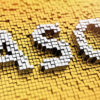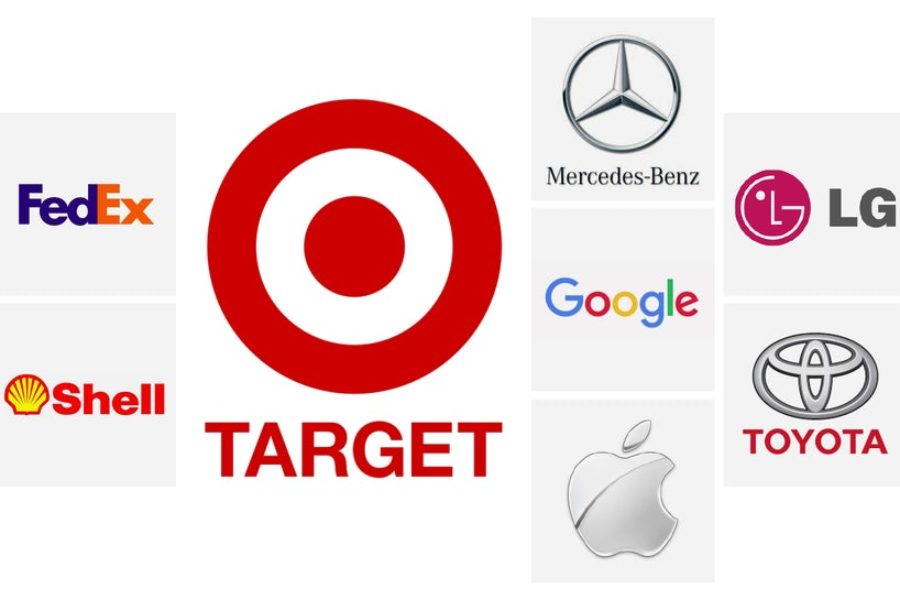Create Powerful Logos Using Psychology: In the right hands, a logo can be a designer’s most powerful tool for creating and promoting a brand. However, when all they have to play with are shape and colour, how do they judge the difference between a logo that will be a success and a logo that will be a failure? The answer lies in the subconscious mind of the consumer.
Logobrain:
When people view different shapes and colours a number of psychological processes occur. By selecting the colours and shapes which elicit the desired response, logo designers are able to influence the way people feel about their design and ultimately how they view the brand the logo stands for. This process doesn’t happen by chance, however. Successful logo designers are all well aware of the resonance their designs have and how these can change according to variables such as age, gender, and culture.
To discover more about how you can use the psychology of logo design to create more meaningful logos, we need to understand exactly what the hidden messages in shape and colour are.
The Psychology of shape:
Shape is of utmost importance to logo design, and to art and design in general. The human brain is hard-wired to understand and memorise shapes: it’s how we learn things. A distinctive shape is stored in the memory long after we see it and the ability to create a new shape that people will remember is the mark of a great logo designer. The McDonald’s Golden Arch, The Nike Swoosh, The Olympic Rings: all of these are examples of memorable logos.
But there’s more to it than simply remembering a shape; the chosen shape must also convey the right message. Curves, diagonals, horizontals, verticals, circles, squares and triangles all communicate a different meaning and a skilled logo designer must be able to harness these meanings to make their design promote a specific message.
Curves:
Curves tend to illicit a positive, comforting response. They can stand for tenderness, love, friendship, care, support, protection, affection, and compassion. Curves imply movement and are often used to mimic a smile to promote happiness in a product – but beware the inverted curve which looks more like a frown.
Vertical lines:
Vertical lines suggest stability, strength, and balance. The precision of verticals also imparts strength and professionalism. They are often used in corporate logos in competitive industries to promote a sense of professional reliability and efficiency. However, vertical lines are often hard to pull off as they can come across as cold, aggrAll Postsessive, domineering, and aggressive. Unless this is what you’re looking for, vertical line-based logos require careful thought.
Horizontal lines:
Horizontals stand for tranquility, community, silence, and composure. They have a calming orderly effect that can help to soothe. A horizontal line promotes trust and are often used to negate the menace and aggression present in verticals and diagonals.
Diagonal lines:
Diagonal lines give a sense of dynamism and rapidity. Diagonals explode in the subconscious mind and logos with lots of diagonals tend to belong to lively, vibrant companies keen to make themselves heard. Overuse of diagonals is a danger, however, as the logo design can quickly seem dangerous, volatile, and untrustworthy.
Circles:
Circles, particularly interconnecting circles, suggest partnership, stability and endurance. Consider the olympic rings. It’s complex meaning of the five continents coming together in unity is made stronger by the positivity of the circle. If the designer used interconnecting triangles, the logo would communicate a very different message.
Squares:
Squares and rectangles are solid, reliable shapes and carry the balanced reliability of both vertical lines and horizontal lines. Logo designers have to be careful with squares, however, as without proper colour balance, shading, and other effects they can seem a bit boring. I don’t think any brand in the world desires to be seen as boring.
Triangles:
Triangles have all the dynamism and danger of diagonal lines in a simple solid structure. They are often used in logos for science, religion, and law to promote a sense of power. Triangles are often used in logos for companies with a masculine market.
Typography and the Psychology of Shape:
Create Powerful Logos Using Psychology of shapes extends into any typography you include in your logo design. Carefully consider the shapes of your chosen typeface and compare them to what the intended message is. Jagged, angular typefaces will prompt the same response as diagonals and may come across as aggressive and loud, but they may also be used to suggest dynamism and vibrancy. Soft, rounded letters are the same as using curves and are often used by companies keen to give a youthful, fresh, friendly impression. Curves and cursive scripts will also often appeal more to a feminine market whereas bold, linear lettering is more commonly used to appeal to masculine markets.
Using different Shape Combinations:
The shapes you choose to incorporate into your logo design will be a powerful element in the message the consumer receives about the nature of the brand. All logo designers need to be acutely aware of the subconscious signals their work is sending out and have an ability to change the designs accordingly. The Nike swoosh is a good example of this. The smooth curve with a pointed diagonal tip mixes both the elements of diagonals and curves giving a sense of movement while creating a sense of joy. By mixing and matching different combinations of shape, an endless number of visual messages can be created. However, shape is not the only element that plays a part in the psychology of logo design.
Create Powerful Logos Using Psychology of colour in logo design:
Just like shape, the different colours you use are an important part of logo psychology. While selecting appropriate colour schemes will come as second nature to most graphic designers, you should always consult the chart below to make sure your colours are conveying the right message for your brand.
BLACK
Mystery, sophistication, death, villainy
WHITE
Hope, simplicity, cleanliness, goodness, purity, cleanliness
RED
Love, passion, romance, danger, energy, aggression
YELLOW
Intellect, sun, friendliness, warmth, caution, cowardice
BLUE
Peace, sincerity, confidence, integrity, tranquility
GREY
Authority, maturity, security, stability
GREEN
Life, growth, nature, money, freshness
ORANGE
Innovation, creativity, ideas, modernism, approachability, fun, affordability
PURPLE
Royalty, luxury, wisdom, dignity
BROWN
The outdoors, rural, organic, maturity, masculinity
PINK
Love, femininity, fun, playfulness
These are just a few general examples of colour psychology in logo design. However, nothing is set in stone. There are thousands of colours to choose from and slight variations in the tone and vibrancy can have a big effect on the message they communicate. For example, pastel tones are often used by modern independent businesses to hint at calm and wholesomeness but can come across as amateur whereas bold, saturated tones communicate more dynamism and action but can come across as brash and pushy.
Create Powerful Logos Using Psychology of Colour for Branding
Clever logo designers tend to stick to one or two original colours to give the brand an association with their chosen colour scheme. For example, when you see a bright red and yellow (or “gold”) combination it’s difficult not to immediately think of McDonald’s. Companies that offer a lot of services or products or promote diversity can sometimes pull off multiple colours, think of eBay, Google, and the Olympic rings, however, most logos are better off sticking to a limited palette.
You should also make sure your logo still works in black and white as some media channels that certain companies use are void of colour.
Logo design Psychology Around the World:
The examples of the meanings of shape and colour above are intended to be used when you are creating logos for a western audience. Different colours and shapes mean different things for different cultures so you should thoroughly research your target market to ensure your branding will still work. This infographic from Information is Beautiful is a very handy resource for finding out how your colour scheme might be appreciated in different countries around the world.
Try Out Different Shapes and Colour Combinations:
The best way to discover the ideal logo design is to play around with combinations of shape and colour. Different combinations can create an endless number of meanings for different audience groups and you can never be certain that any two people will react in the same way to your selection. While you may be tempted to approach logo design from a scientific, psychological perspective, it’s always best to use your graphic designer’s instinct to select what you feel works best. The more you practice, the better your visual communication and branding skills will become.







